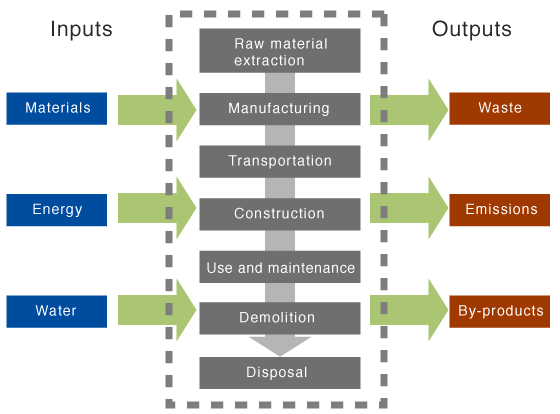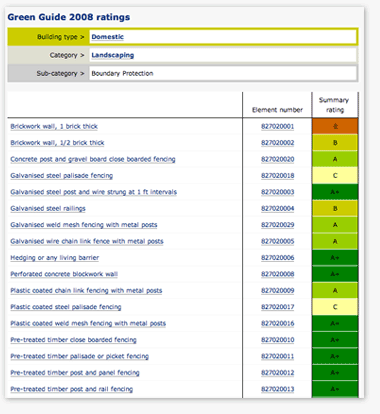Week 12 - Materials
3. LCA
3.6. Impact assessment
 The first step in this process is to consider and list the impact categories. For example, if the production and use of your product requires energy, then climate change would be an impact category. If a toxic chemical was used during manufacturing then human health would be an impact category. Impact categories may correspond with environmental problems, such as human toxicity or ozone depletion. Common categories include:
The first step in this process is to consider and list the impact categories. For example, if the production and use of your product requires energy, then climate change would be an impact category. If a toxic chemical was used during manufacturing then human health would be an impact category. Impact categories may correspond with environmental problems, such as human toxicity or ozone depletion. Common categories include:
- Global warming potential (expressed as CO2 equivalents and usually with a timescale provided , 100 years is commonly used (GWP 100)).
- Ozone depletion potential (ODP) in the stratosphere (expressed as R11 (or trichlorofluoromethane) equivalents.
- Acidification potential (AP) (expressed as SO2 equivalents)
- Eutrophication potential (expressed as PO4 equivalents)
- Photochemical ozone creation potential (POCP) (expressed as C2H4 equivalents)
- Abiotic resource consumption (expressed as Fe equivalents)
- Human and ecotoxicity potentials, these are often difficult to establish as there are no models that can be applied uniformly to all classes of substances. It is also necessary to consider the relative risk and exposure to biota.
Other categories may include water consumption, Smog formation potential, waste production, land use, air pollution and alteration of habitats. The importance of each category will be different for each region or country. There are several tools available that use LCA, e.g. BEES (Building for Environmental and Economic Sustainability). These tools may specify different environmental categories, e.g. indoor air quality.
Image courtesy of greenspec.co.uk
After this step, the magnitude of the potential impact of individual substances within each impact category is determined.
The green guide (www.thegreenguide.org,uk)- example

Integrated Material Profile and Costing Tool (IMPACT) click here